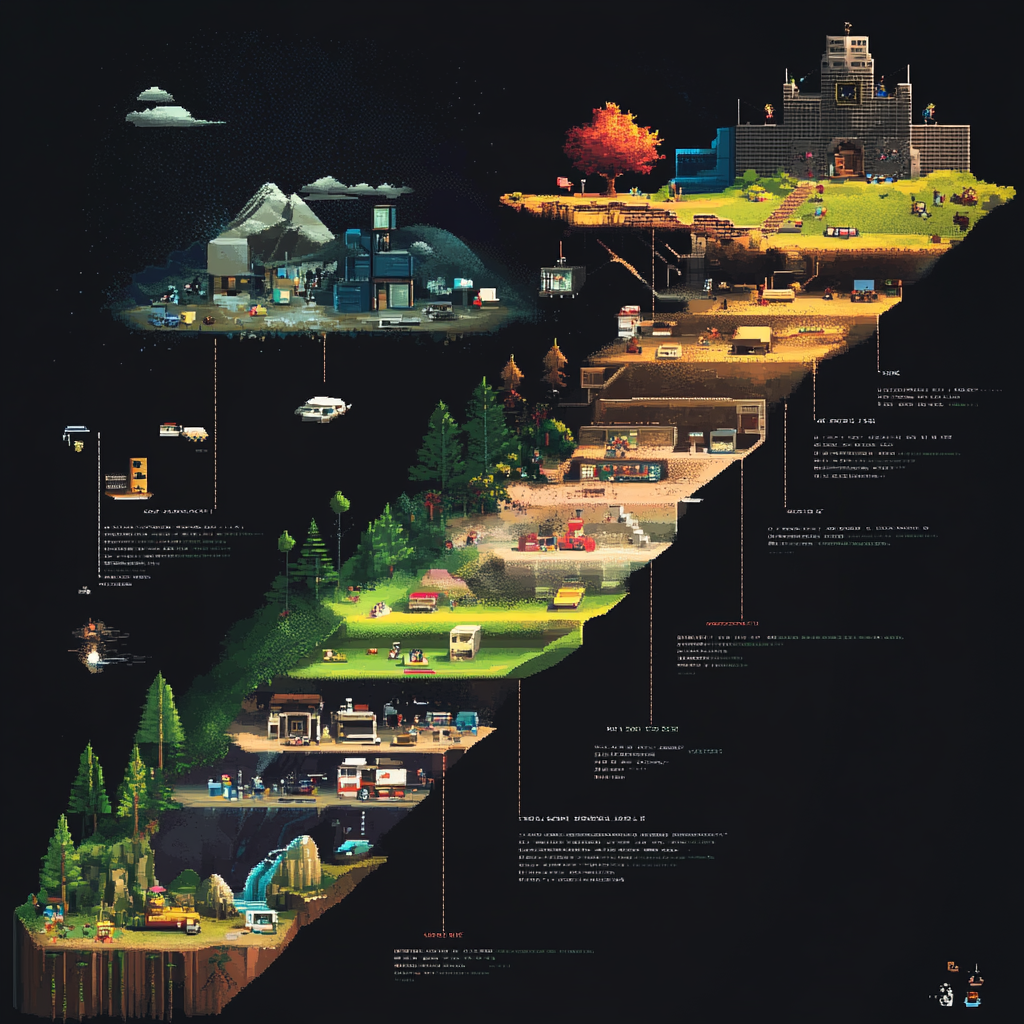The world of video games, a vibrant tapestry of interactive experiences, didn’t spring into existence fully formed. Its evolution is a fascinating journey, marked by technological leaps, creative innovations, and a constant push to engage and entertain. Tracing the historical perspective of game design reveals a gradual but profound transformation from simple electronic pastimes to complex, immersive virtual worlds.
The Dawn of Digital Play (1950s-1970s):
The earliest “games” were more akin to experiments or demonstrations on early mainframe computers. These rudimentary interactions, often text-based or utilizing basic vector graphics, laid the groundwork for what was to come. Think of:
- Tennis for Two (1958): Often cited as one of the first video games, this oscilloscope-based creation was a purely technical demonstration of interactivity.
- Spacewar! (1962): Developed at MIT, this two-player space combat game introduced concepts like real-time control, physics, and competitive gameplay.
- Text-based Adventures (1970s): Games like Colossal Cave Adventure relied entirely on text input and output, challenging players with puzzles and exploration through descriptive prose. These games emphasized narrative and player imagination.
The design principles of this era were heavily constrained by technology. Focus was on making the interaction functional and somewhat engaging within those limitations.
The Arcade Golden Age (Late 1970s – Early 1980s):
The rise of dedicated arcade cabinets brought video games to the masses. This era saw the birth of iconic titles and the establishment of fundamental game design principles:
- Simple and Addictive Gameplay: Games like Pac-Man, Space Invaders, and Donkey Kong featured straightforward mechanics that were easy to learn but difficult to master, encouraging repeated play.
- High Score Chasing: The competitive element of trying to beat your own or others’ high scores provided a strong motivation for continued engagement.
- Visual Appeal: The transition to raster graphics allowed for more detailed and colorful visuals, creating a more captivating experience.
- Limited Lives and Continues: These mechanics were not just about challenge but also about the arcade business model.
Design in this period was driven by the need to create compelling experiences that would entice players to insert more coins.
The Console Wars and the 8-bit Revolution (Mid-1980s):
The home console market exploded with systems like the Atari 2600 and the Nintendo Entertainment System (NES). This era brought:
- More Complex Gameplay: Increased processing power allowed for more intricate game mechanics, level design, and enemy AI. Games like Super Mario Bros. and The Legend of Zelda introduced scrolling levels, power-ups, and expansive worlds.
- Narrative Emergence: While still relatively simple, storylines became more prevalent, providing context and motivation for the gameplay.
- Genre Definition: Platformers, action-adventure games, and RPGs began to solidify their core mechanics and conventions.
Game design started to focus on creating longer, more involved experiences tailored for home play.
The 16-bit Era and the CD-ROM Revolution (Early – Mid 1990s):
Systems like the Super Nintendo Entertainment System (SNES) and the Sega Genesis offered enhanced graphics and sound. The advent of CD-ROM technology brought larger storage capacity, leading to:
- Improved Graphics and Sound: More detailed sprites, richer color palettes, and CD-quality audio enhanced immersion.
- More Complex Narratives: Games like Chrono Trigger and Final Fantasy VI featured intricate storylines, character development, and branching narratives.
- New Genres: The CD-ROM facilitated the rise of full-motion video (FMV) games and further expansion of RPGs and strategy games.
Designers began to experiment with more cinematic storytelling and deeper, more persistent game worlds.
The 3D полигон Revolution (Late 1990s – Early 2000s):
The introduction of true 3D graphics with consoles like the PlayStation and Nintendo 64 marked a paradigm shift in game design:
- New Perspectives: Games moved beyond 2D planes, offering players freedom of movement in three-dimensional environments. This required entirely new approaches to camera control, level design, and character movement.
- Emergence of New Genres: First-person shooters (FPS) like Doom and Half-Life redefined action gameplay, while 3D adventure games like The Legend of Zelda: Ocarina of Time set new standards for immersive world-building.
- Increased Complexity: Managing depth, perspective, and interaction in 3D spaces presented new design challenges and opportunities.
Game design in this era was largely about exploring the possibilities and overcoming the challenges of the third dimension.
The Online Era and Beyond (2000s – Present):
The rise of the internet and powerful home computers ushered in an era of online multiplayer gaming and increasingly sophisticated experiences:
- Massively Multiplayer Online Games (MMOs): Games like World of Warcraft created persistent online worlds with vast communities and emergent gameplay.
- Focus on Multiplayer: Online competitive games like Counter-Strike and League of Legends fostered thriving esports scenes and emphasized strategic team play.
- Indie Game Renaissance: Digital distribution platforms lowered barriers to entry, leading to a surge of innovative and experimental indie games.
- Mobile Gaming: The proliferation of smartphones and tablets opened up a massive new market with unique design considerations for touch-based interfaces and shorter play sessions.
- Virtual and Augmented Reality (VR/AR): These emerging technologies are pushing the boundaries of immersion and interaction, presenting new frontiers for game design.
Modern game design is characterized by its diversity, accessibility, and constant innovation. Designers grapple with issues of player engagement, monetization, community building, and the ethical implications of game mechanics.
Conclusion:
The evolution of game design is a testament to human creativity and technological progress. From simple electronic circuits to sprawling virtual universes, each era has built upon the foundations laid by its predecessors, constantly pushing the boundaries of what interactive entertainment can be. As technology continues to advance, the future of game design promises even more exciting and transformative experiences, continuing this remarkable historical journey.

No responses yet